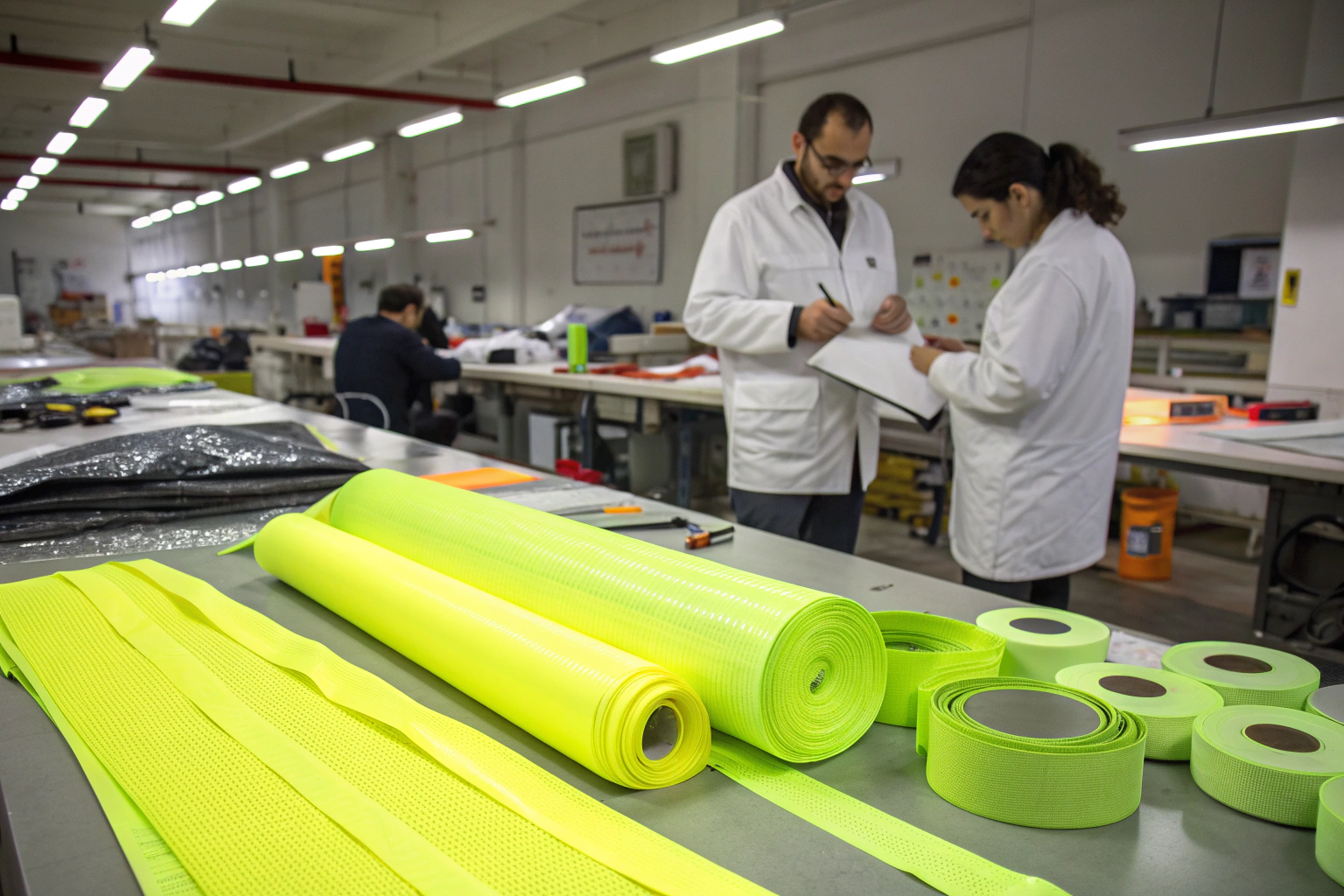When sourcing fabrics for high-visibility workwear, safety standards are not just guidelines—they are strict requirements. Many buyers struggle with the complexity of standards like AS/NZS 1906.4, dealing with unclear supplier claims, inconsistent testing reports, and the risks of non-compliance. These issues can delay production, increase costs, and even create liability risks if the garments fail safety checks.
To source AS/NZS 1906.4 retroreflective fabrics effectively, buyers must understand the latest standard updates, choose suppliers with accredited test reports, and validate product durability through washing and weather testing. Following a structured sourcing process ensures compliance, reduces risks, and guarantees that your garments meet international safety requirements.
For brands, factories, and procurement teams, learning the correct way to source is a vital investment. By the end of this article, you’ll know the exact steps to take, the supplier documents to request, and the fabric classifications to specify in your orders.
What is AS/NZS 1906.4 Standard for Retroreflective Fabrics?
AS/NZS 1906.4 is the essential performance standard for retroreflective and fluorescent fabrics used in safety garments. It defines how materials must perform under conditions like low light, rain, repeated washing, and industrial wear. Many buyers know this standard exists but don’t realize that the 2023 update introduced significant changes that affect sourcing.
AS/NZS 1906.4:2023 establishes strict testing protocols for background colors, retroreflective brightness, and durability. It introduced new fabric classes like NF(W) for wet-weather materials and SP for separate performance retroreflectives, expanding options for garment manufacturers.
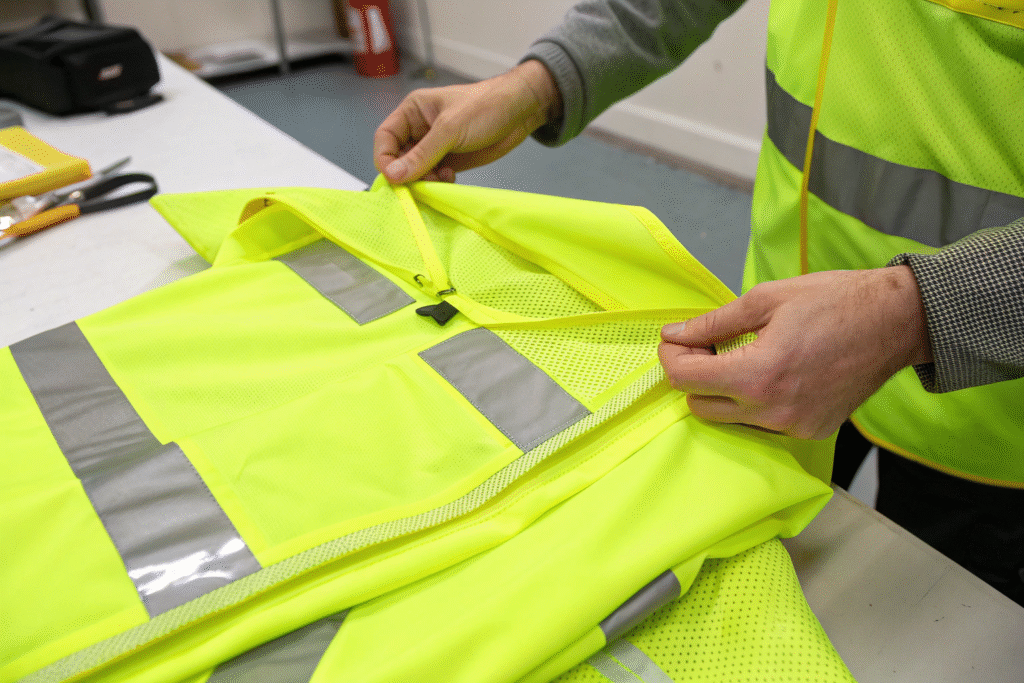
Understanding this standard is the first step to making correct sourcing decisions. If buyers fail to align with the updated clauses, products may pass factory checks but fail third-party testing during audits, creating costly rework.
Why did the 2023 update add new classifications?
The 2023 revision added green and pink as acceptable fluorescent background colors, responding to global demand for more garment visibility options in emergency services and roadside safety. It also introduced extended wash testing to ensure fabrics last longer in industrial laundry cycles. This shift aligns with the growing emphasis on sustainability and product lifecycle performance, as seen in reports from Standards New Zealand.
How do fabric classes affect sourcing choices?
Each classification—R, RF, NF(W), SP—defines performance in specific conditions. For example, Class R is for general retroreflectives, while SP ensures separate photometric and physical durability. Buyers must choose materials based on garment use cases, referencing data from labs like AWTA Product Testing. Incorrect classification selection leads to compliance failures, especially in contracts for government or utility uniforms.
Where to Buy AS/NZS 1906.4 Compliant Safety Fabrics?
The main challenge is finding suppliers who can actually prove compliance, not just claim it. Many exporters from Asia list “1906.4” in product descriptions but lack third-party test reports. Buyers need to go beyond catalogues.
The best approach is to source directly from textile mills or distributors who can provide accredited test reports from recognized labs like AWTA, SGS, or Intertek, showing full compliance with AS/NZS 1906.4:2023 requirements.
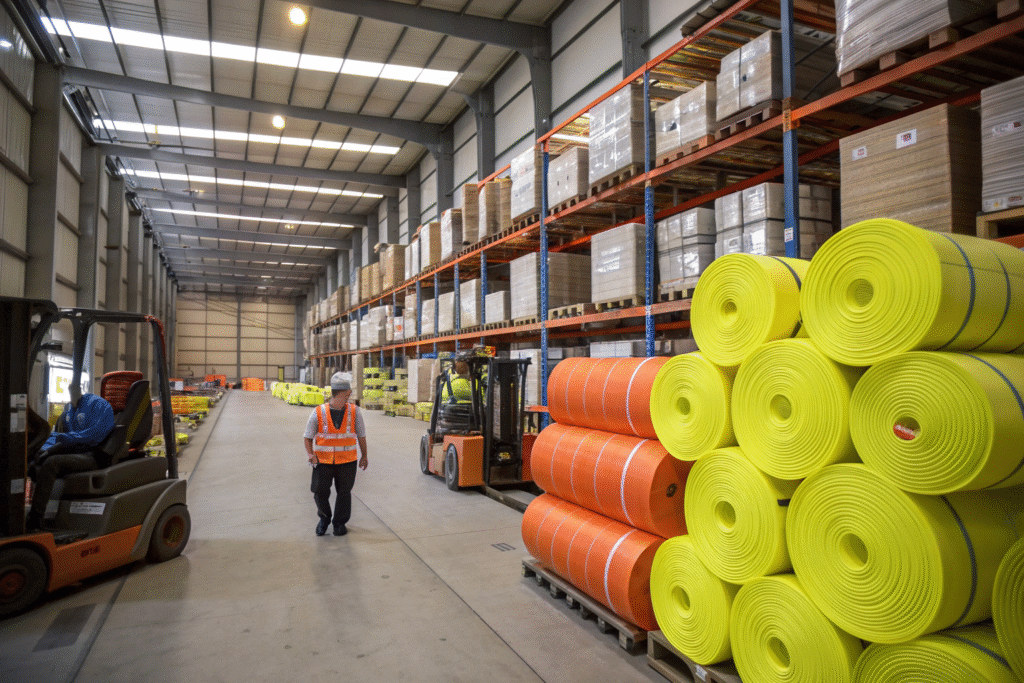
Large procurement teams in Australia and New Zealand often rely on long-term contracts with certified suppliers. Smaller buyers, however, may find success through Alibaba, textile expos, or specialized sourcing agents that verify lab testing certificates.
What documents should suppliers provide before purchase?
At minimum, buyers should demand:
- Photometric performance reports (brightness under specified angles).
- Colorimetric data (matching fluorescent ranges defined in AS/NZS 1906.4).
- Durability testing results, including wash cycles and flex cracking.
For example, accredited results from Intertek or SGS ensure you are not relying on unverified claims.
Which sourcing channels offer the most reliable options?
Direct sourcing from Chinese or Southeast Asian factories with proven export records can be cost-effective, but verification is crucial. Buyers in the U.S. often use Alibaba to find options but validate compliance through trade shows like Intertextile Shanghai or via established distributors in Australia. Websites like Fibre2Fashion also list certified suppliers with retroreflective materials.
How to Verify Compliance Before Bulk Orders?
Even if a supplier shows certificates, buyers should independently verify quality. A common pitfall is that test reports are outdated, not tied to the actual production lot, or cover only part of the performance requirements.
The correct way to verify compliance is by requesting current test reports linked to the production batch and conducting third-party lab tests before bulk shipment.
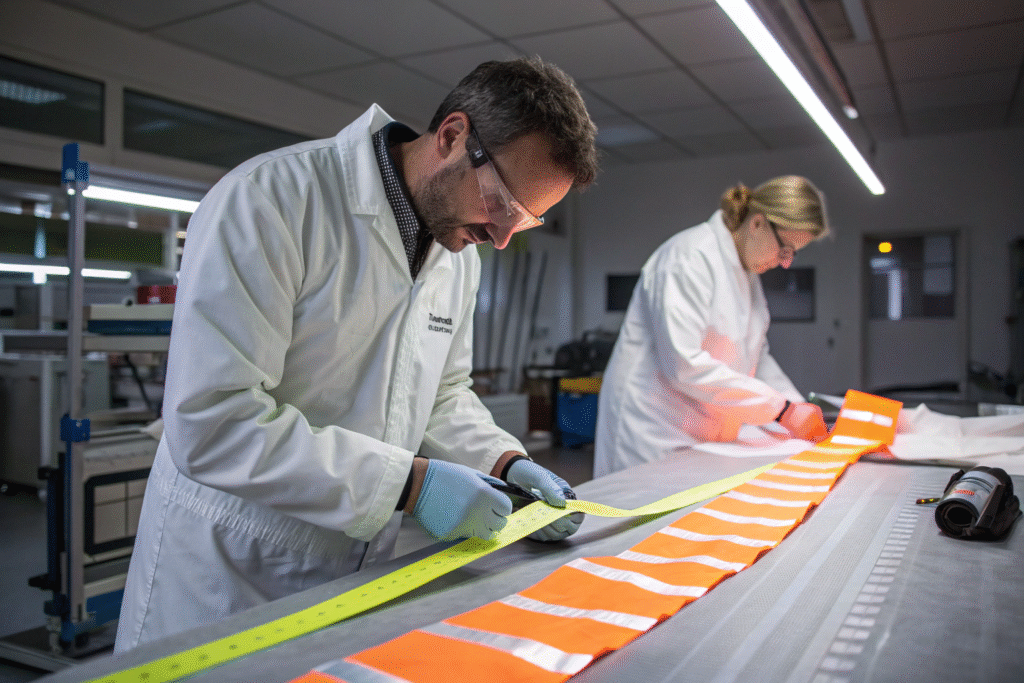
This extra step may seem costly, but it prevents container rejections at customs or failed garment audits, which are far more expensive.
What are the key performance tests under AS/NZS 1906.4?
Key tests include:
- Night-time retroreflectivity (measured in cd/lx/m²).
- Color fastness to light and washing.
- Flexibility and crack resistance in cold conditions.
- Abrasion durability for retroreflective strips.
These are explained in the full document available at ANSI Webstore.
Can buyers perform in-house validation?
Yes, larger garment companies invest in small-scale labs that check brightness and color consistency using lightboxes and spectrophotometers. While not a replacement for accredited certification, this process ensures faster detection of supplier quality issues. Industry reports from OEKO-TEX also show how sustainability audits overlap with safety fabric compliance.
What Are the Best Practices for Long-Term Sourcing?
Short-term purchasing solves immediate needs, but building a reliable supply chain requires strategy. Many procurement failures happen because buyers treat safety fabrics like ordinary textiles without considering compliance cycles.
Best practices include working with suppliers who regularly renew AS/NZS 1906.4 certificates, negotiating contracts that include compliance guarantees, and diversifying sourcing across at least two certified mills.
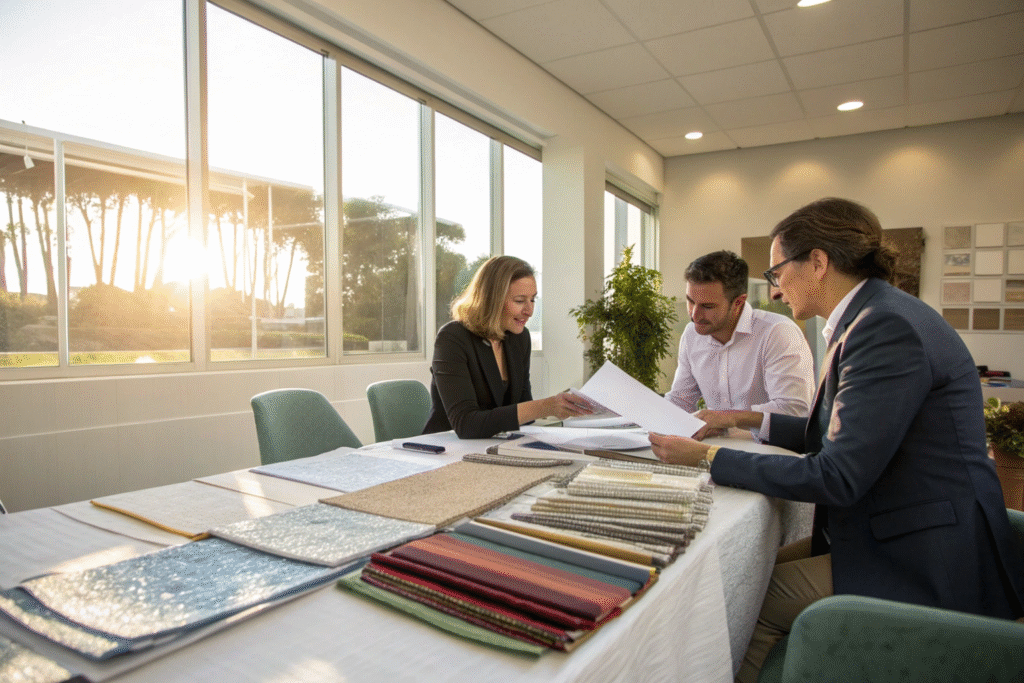
This approach reduces risk, stabilizes pricing, and ensures garment projects don’t face sudden delays due to compliance gaps.
Should buyers rely on one supplier or multiple?
Relying on a single source increases risks if that supplier fails audits or faces logistic delays. Smart buyers split orders across two or three certified factories. This not only balances risk but also drives better negotiation on price and terms, as explained by Textile Today.
How do long-term contracts improve compliance?
Contracts that specify mandatory compliance with the latest AS/NZS 1906.4 force suppliers to maintain updated certificates. Including liability clauses for failed testing protects buyers financially. Some global brands even mandate annual re-testing, a practice recommended by Bureau Veritas.
Conclusion
Sourcing AS/NZS 1906.4 retroreflective safety fabrics is not just about buying materials—it is about ensuring compliance, durability, and long-term reliability. By understanding the 2023 updates, selecting suppliers with valid accredited reports, and building resilient sourcing contracts, buyers can secure fabrics that meet safety standards while avoiding costly delays.
If you are considering producing high-visibility or protective garments, our team at Shanghai Fumao can provide fully certified retroreflective fabrics that comply with AS/NZS 1906.4:2023. We manage everything from weaving and coating to testing and export logistics. To start your sourcing journey with confidence, reach out to our Business Director Elaine at elaine@fumaoclothing.com and let’s develop your next compliant fabric order together.

